Is Kea the last untapped island in Greece?
The Cyclades archipelago in Greece is known for bustling destinations like Mykonos and Santorini. But an unexplored island is emerging from the shadow of its siblings, offering a blend of rusticity, sublimity and polished new digs.
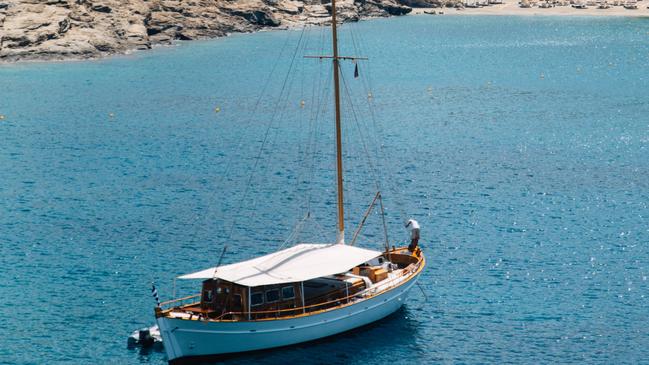
In the league of heavy-hitting island groups, the Cyclades knock it out of the archipelago. This circle-shaped, azure-tinged chain in southern Greece flaunts a mythopoetic beauty that inspired legends, and now legions. The magnetic charge and earthly splendour of its major players are almost impossible to resist. Mykonos is the bacchanalian choice, with sugar-cube buildings and lusty revelry. Santorini, the romantic classic, is equal parts volcanic and galvanic. Milos has chalky cliffs, deep turquoise water and bougainvillea-splashed alleys. Yet there are other glinting options on this charm bracelet.
Kéa is the closest Cycladic island to the mainland, but it barely registers on the radar of international travellers and ardent sensualists. Tuned-in Athenians have flocked here for generations, basking in its Arcadian grace and unhurried pace, and snapping up weekend homes. There are no ferries to the island from Piraeus, the main port of Athens, ensuring its relative obscurity. Instead, visitors depart from lesser-known Lavrio where, on a recent morning, I awaited a 30-minute speedboat transfer. My destination: One&Only Kéa Island. The just-opened resort, as ambitious as it is glamorous, is an evolution in the story of Kéa – pronounced kay-ah. The windmills of change are coming to this untapped utopia.
In folklore, water nymphs gravitated to Kéa for its abundance of springs. But, at first, the mystical island resembled a withered moonscape of rocks, terraces and terracotta shards piled high. A lusher picture emerged as the retreat came into view. Poised above a sapphirine cove on the island’s west coast, One&Only evokes a haute Hellenic village with its main building on the crest of a hill and 63 villas cascading around it. At the marina, under a cerulean sky, I noticed sun-worshippers cavorting at the beach club, and day-trippers boarding boats to private inlets. No one said “Welcome to Fantasy Island” but it wouldn’t have been odd if they had. The mood was one of abounding joy.
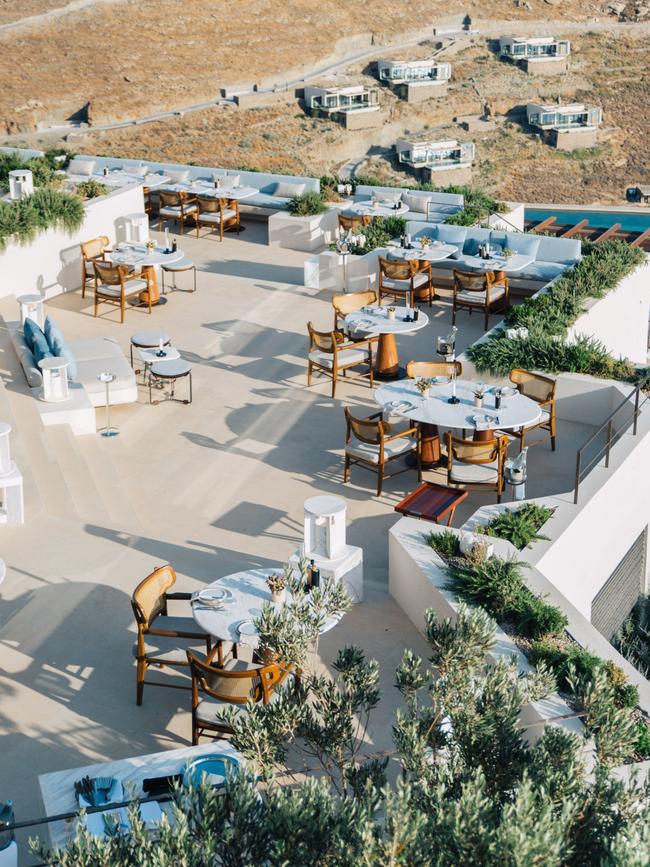
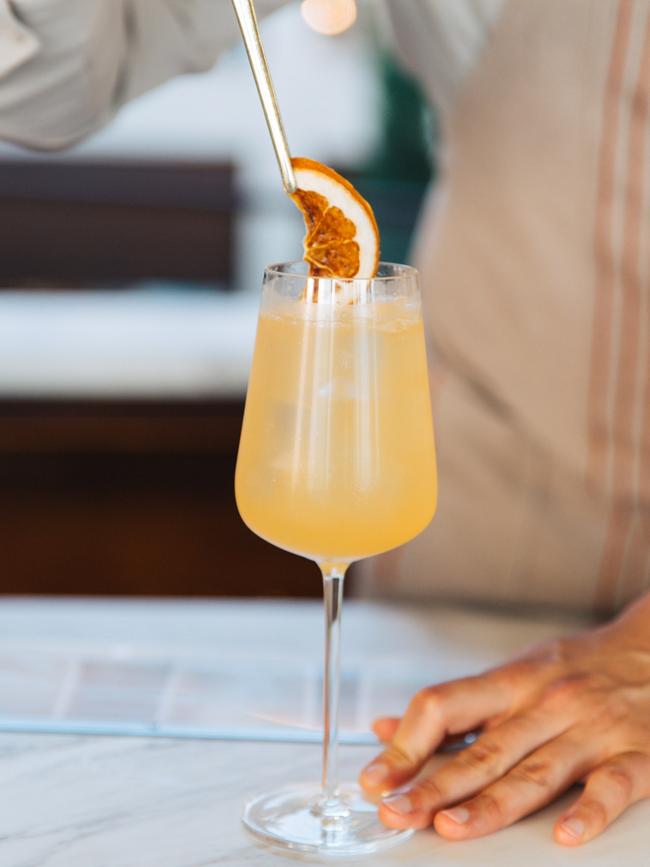
-
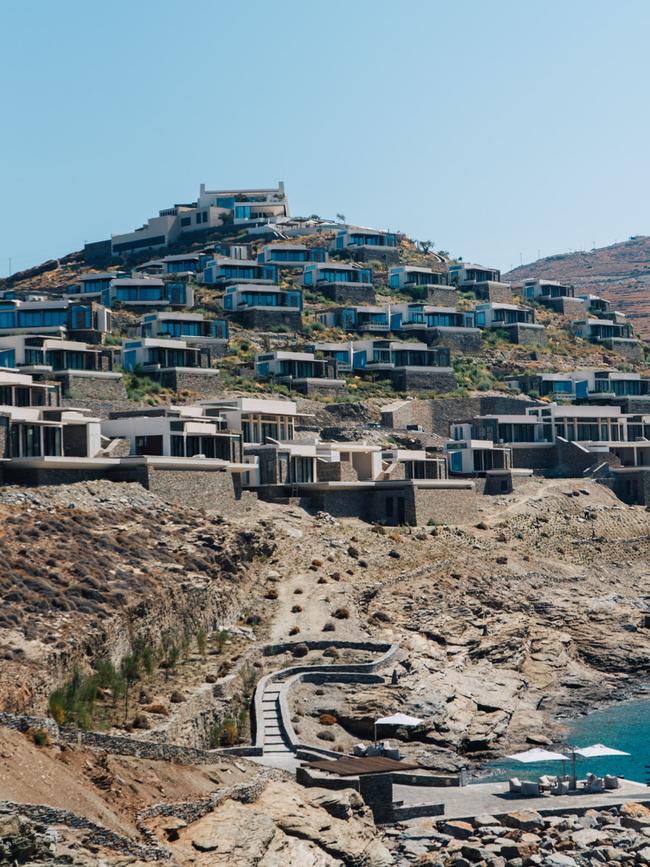
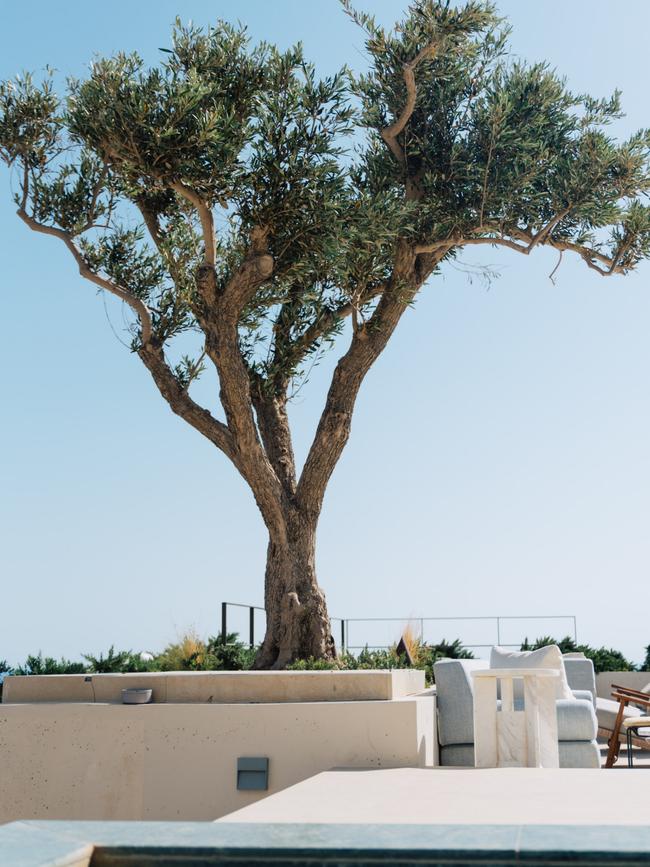
With their fluid, ecru uniforms, the staff members recalled the famous Cycladic sculptures – except they were hotfooting it, preparing pomegranate welcome drinks and manning the golf buggies that ferry guests around. Unless you possess the lower body strength of a satyr, you will gladly hail one, too. As we ascended a sinuous road, the resort’s sprawling layout became as clear as a diorama. Most of its cliffside dwellings, adroitly embedded into the terrain, look directly out to sea. The central structure, built around an atrium, spans a honeycomb of whitewashed spaces including bars, eateries and an alfresco lounge. Surveying the endless horizon, my eyes adjusted to the delicious spectrum of Aegean blues.
Intriguingly, Kéa is One&Only’s second Greek outpost in the space of a year. Last November, the Dubai-based Kerzner International debuted One&Only Aesthesis on the Athenian Riviera. Set in the beachside suburb of Glyfada, it conjures the Greek salad days of the 1950s and ’60s. Where Aesthesis is whimsical, Kéa is monumental. Architect John Heah, whose output for Aman Resorts and Four Seasons exhibits a high-minded rigour, fused Cycladic minimalism with sybaritic grandeur. Heah’s decision to combine rough-hewn local stone with textured concrete, and elegant archways with sharp-edged angles, imbues the project with a contextual modernity. Enriching his Mediterranean mosaic are oak-wood furnishings, sky-blue upholsteries, marble floor lanterns and enormous olive trees whose branches reach for the heavens.
Staying here is akin to being gifted by the gods. All the rooms are airy, spacious villas, some extending to two bedrooms, with cool-toned marble, limestone floors and harmonious proportions. In the ceiling, James Turrell-style cut-outs reveal slivers of shifting light. “There’s nothing else like it in the Mediterranean,” Heah said, which is not hyperbole. “I wanted a sense of simplicity but also sophistication.” Enviably secluded, sumptuously designed, it really is the one and only. Stellar, sheltered terraces, equipped with an infinity pool and seating areas, awaited. Sinking into the pool, as gulls swooped overhead and yachts drifted on the water below, I wanted for nothing. Well, aside from an acorn-flour cookie and a freddo espresso, the frothy caffeinated drink served on ice, both within reach.
At sunset, I hailed a buggy to Kosmos bar for a technicolour spectacle like no other. As the clock approached 8.45pm, the sky was tinted with aquarelle shades, ambrosial oranges, smouldering reds and peppy pinks. At Atria, the open-air restaurant, keenly focused chef Dimitris Katsanos blends locavorism with a pinch of internationalism. Grilled octopus, spanakopita gyoza and flaky cheese pie drizzled with thyme-flavoured honey were all delectable. So, too, was a rosé from neighbouring Tinos island, better than any I’ve had from Provence. Savvy sommelier Georgia Marouli has devised a wine list with plenty of singular bottles from the region. On another occasion, I tried an exquisitely creamy savatiano from the mainland and an uncommonly floral rosé from Santorini. Paired with razor-thin slices of loza, a spicy pork salami made on Kéa, they were both a hit.

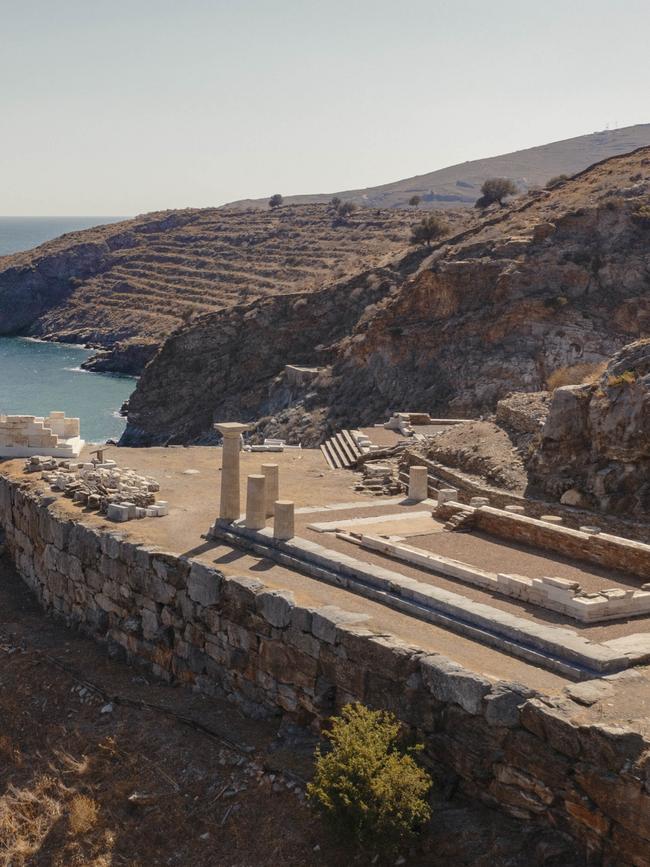
-
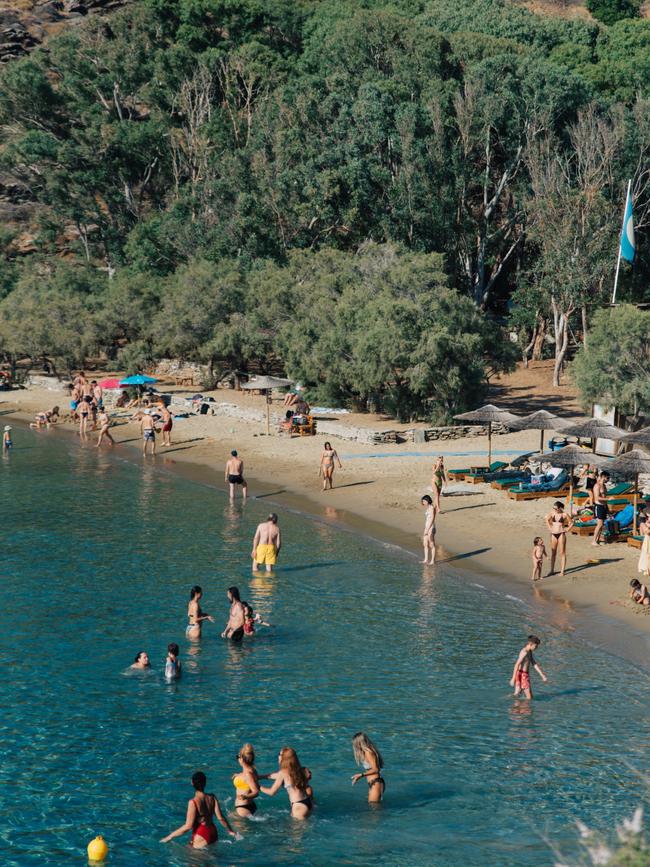
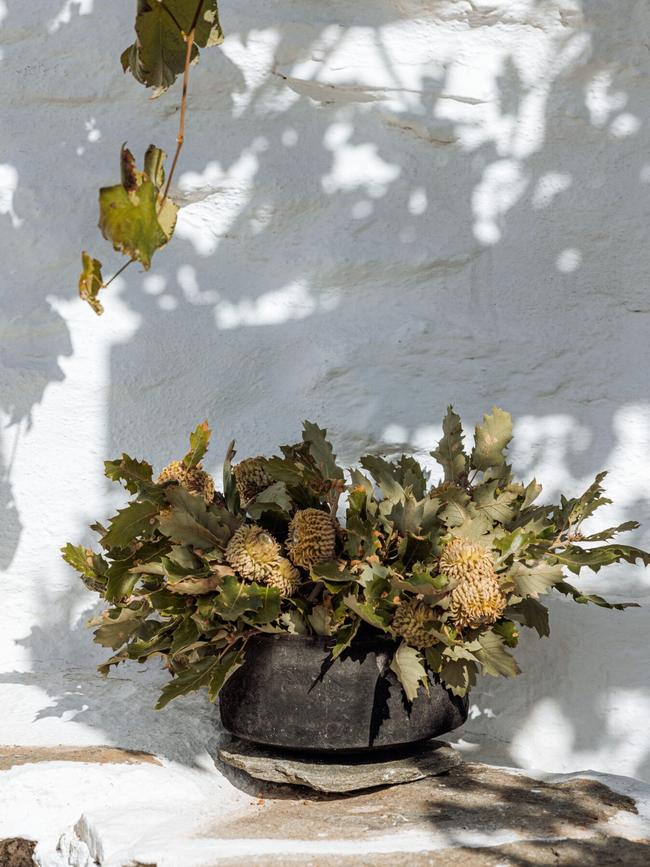
To ease the impact of bibulous meals, guests can sign up for a roster of heart-racing activities. Tennis and padel games, e-cycling along the coiling coast, and excursions to untouched beaches like Kalamitsi on the resort’s kaiki, a traditional fishing boat, among them. Seasoned divers can descend to the numerous shipwrecks submerged offshore, including the Britannic (sister of the Titanic and felled by a naval mine in 1916). New this season are free-diving lessons by intrepid South Africans Hanli Prinsloo and Peter Marshall. “Free-diving can be seen as elitist, but it’s really just taking a breath and exploring the ocean on your own terms,” Prinsloo said of the sessions that blend yoga, breathwork and uninhibited plunging. “You become one with the sea – it’s empowering.”
Next morning, after a car transfer heading north into rugged hills, I marched into a valley ablaze in wildflowers. Kéa, 19 kilometres long and nine kilometres wide, has a vast interior network of footpaths ideal for hiking. “This is where the ancients walked,” said guide Valery Papadimitriou as we ambled along a dessicated riverbed. At the start of the trail, marked by oak trees and oleander bushes, the sun was searing but, as we progressed, an extravagant canopy of olive, fig and almond trees vibrating with cicadas offered respite. At one point, a resident astride a donkey cantered by, his moustache as thick as lamb kofta, his satchel brimming with vegetables. Like their ancestors, many of the 2500 locals scattered across the islet remain self-sufficient farmers.
You don’t need a divining rod to reveal Kéa’s wellspring of antiquity. At the end of the hike, near a startlingly pretty beach, we marvelled at an ancient amphitheatre and marble temples of Athena and Apollo, the remains of ancient Karthaia. Admiring the Doric columns and stone pedestals, I realised I had lost my marbles by letting my Greek become ignominiously rusty. The hotel team, gregarious and garrulous to a fault, were happy to bring me up to speed. “Kéa used to be almost alternative – not very open to tourism,” Papadimitriou told me in the mother tongue. Earlier, in the car, we scooted by her tiny village of Gyristi. “We have a market, a taverna and a hairdresser,” she said, her hands forming a Marge Simpson beehive in the eventuality I didn’t recognise the word.
Back at the resort, after another convenient speedboat transfer, I ventured to the tree-shaded Bond Beach Club. The name is a reference to bonding, not 007, but arriving by water can feel very Ian Fleming. A deejay played chilled electronic tracks and waiters delivered crowd-pleasing plates of tuna tacos, lobster rolls and chicken souvlakia pierced with rosemary stems. Bond and Atria will open to outside guests, but it’s not as though Kéa will ever overtake Mykonos in clamour and carousing. “Kéa is not for island-hopping – you want to spend time here,” Jerome Colson, the resort’s general manager, told me. On the opposite side of the bay were a cluster of private One&Only residences for those who aspire to be habitués. An affable Belgian with a wardrobe of bright linen shirts, Colson spent two years toiling behind the scenes; the entire project was five years in the making. “I know the island inside out,” he said, rattling off a list of standout tavernas.
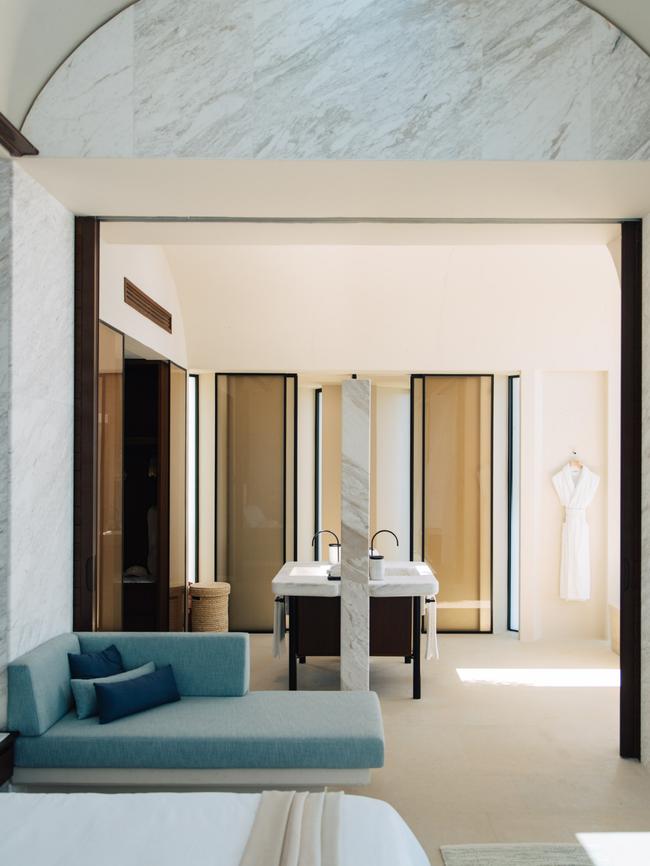
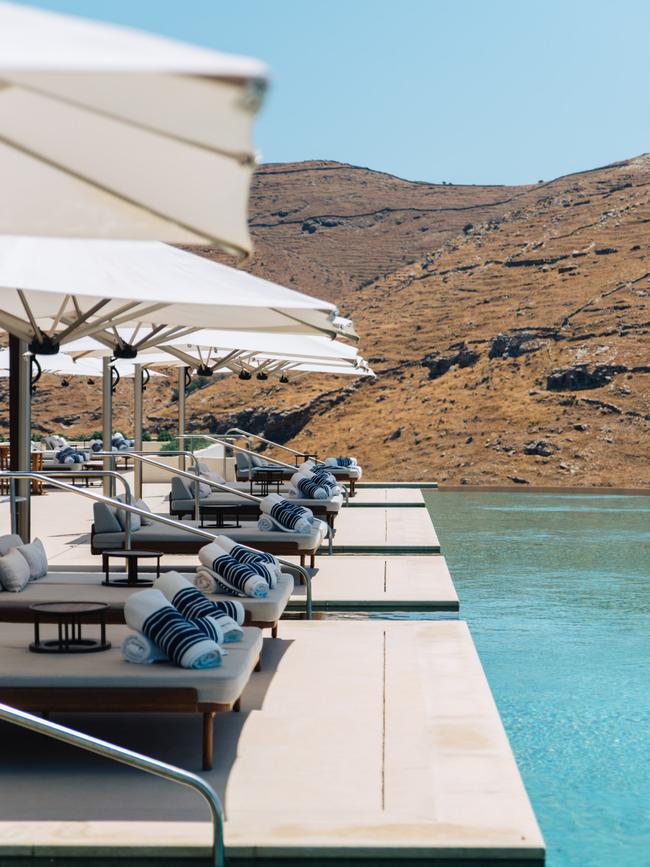
-
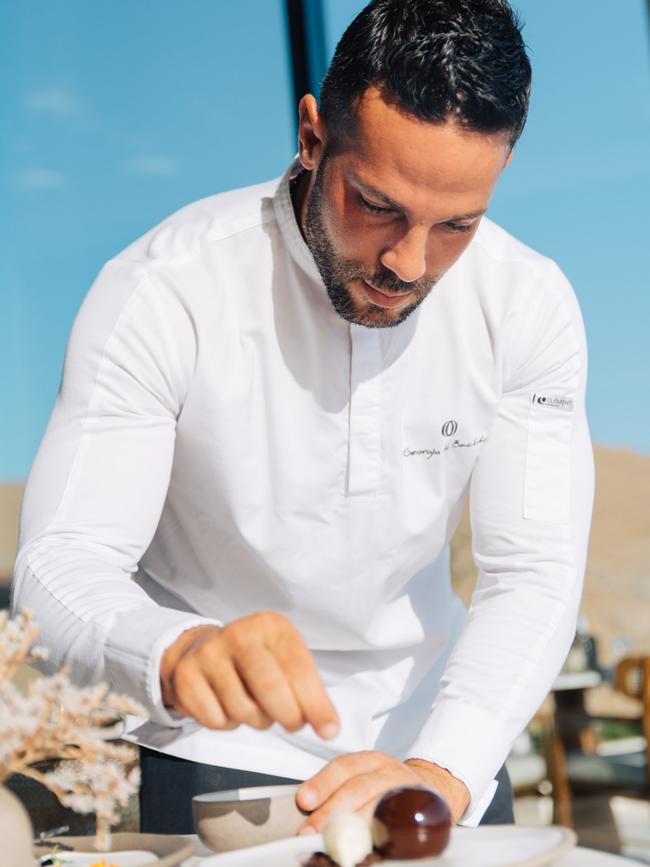
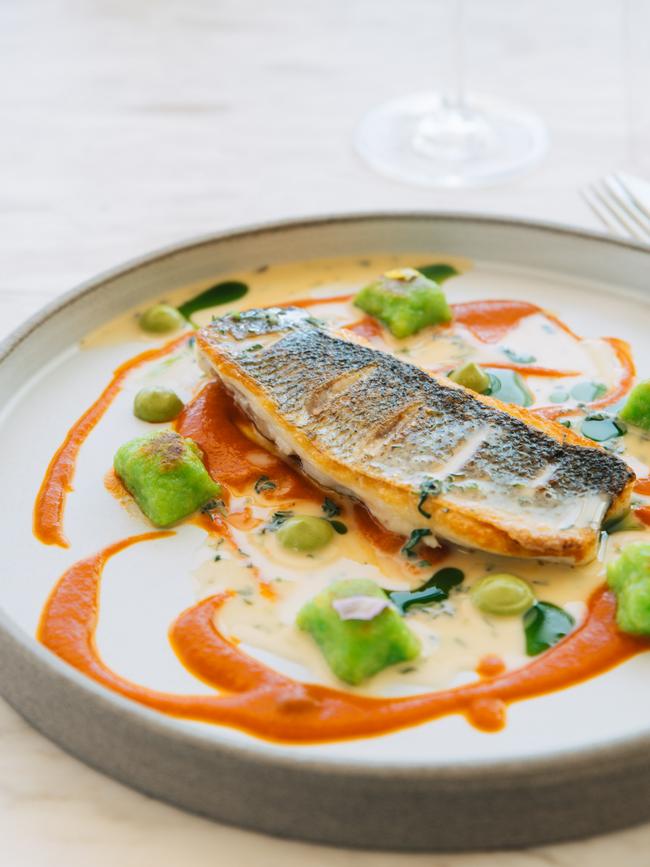
The notion of the undiscovered Greek haven is a recurrent trope in travel, but in Kéa’s case it’s accurate. There are no Nobu restaurants or designer stores and scant high-end hotels. Ioulida, the island’s chora, or main village, is a beguiling jumble of clay tile-roofed houses, stone-paved streets, and kafenia with rickety wooden chairs. In the gloaming, ginger cats disappeared against rust-hued walls, and the tightly packed homes looked as though they had been dusted with icing sugar. Travel here is by foot or by hoof. Leading the way was guide Sotiria Antonopoulou, whose consuming passion for Kéan and Greek culture was infectious. She pointed out the impressive town hall conceived by German architect Ernst Ziller, an archaeological museum with enigmatic clay figurines wearing hoop skirts, and, on the outskirts of the village, a stone-carved lion dating to 600BC with a sphinx air and a Mona Lisa smile.
Close to the main square were the cheese and rice pudding purveyor Tyrakeion, ceramicist Savina Vasiliadi, who fashions delicate porcelain pomegranates, and the erstwhile atelier and residence of Alekos Fassianos. The Athenian artist, who began flitting between rain-drenched Paris and Kéa in 1967, prompted other painters and sculptors to join him. “In the 1970s, Kéa was known as Little Paris,” said Antonopoulou as we inspected the former studio. From the door knobs to the painted furniture, the ramshackle space revealed the artist’s distinct handwriting. Rather than emulate European avant-gardists, Fassianos borrowed cues from vase painting as well as folk art traditions for his flattened, figurative style. We capped our tour at a humble taverna, relishing its homemade keftethes and dolmathes. In lieu of dessert, I learned sweet Greek terms, like tsabouna, the local version of a bagpipe associated with religious festivities.
The next day, I could have visited the port of Korissia or the fishing village of Vourkari for more enlightenment, but as the Kéan lyric poet Simonides once observed, “Not even the gods fight against necessity.” With a crick in my neck, I headed to the spa at the hotel seeking solace. The three-storey sanctuary, situated above picture-perfect Vroskopos Bay, could have beamed down from Mount Olympus. I was not expecting to hear familiar accents, but the treatment brand is from Sydney-based Subtle Energies, which deployed a few of its Antipodean experts. Greek therapist Maria Prapa ironed out my knots with a kansa wand, an Ayurvedic massage tool with a bronze top. Rested, revived and glistening in fragrant citrus oil, I floated to sunset drinks once more.
Installed at the poolside café on my final morning, studying the sepia, weather-beaten hills rising around the resort, I revisited the island’s gripping backstory. History is embroidered into the fabric of Kéa, which unfurls from the Neolithic era. Over the centuries, this surprisingly fertile island of oak trees, olive groves and aquatic nymphs was passed between the Byzantines, Venetians and Ottomans as a prize. Excavations for the resort unearthed antiquities that are now being evaluated in Athens, and eager guests can opt for hands-on archaeological digs with a resident historian. My woolgathering was interrupted by a question behind me. “Can we live here?” a precocious young English girl asked her mother, who demurred. She responded with her own query: “Who do you think is the star of the holiday?” she said. “It’s you.” I begged to differ. It’s the island.
The writer was a guest of One&Only Kéa Island (open April to October). Speedboat transfers run between the two One&Only properties. oneandonlyresorts.com
